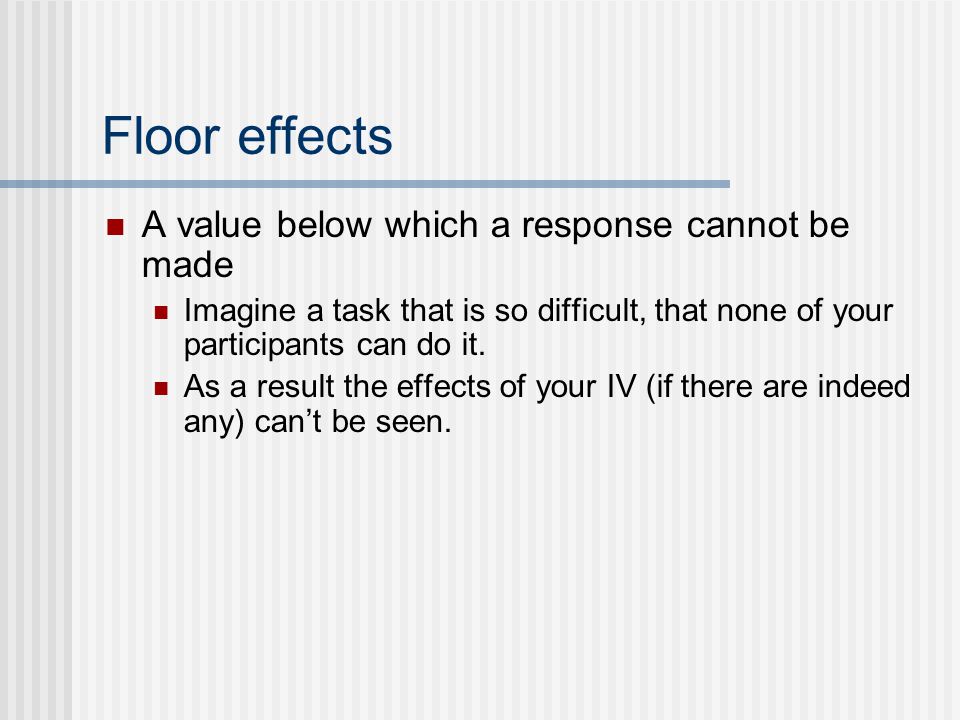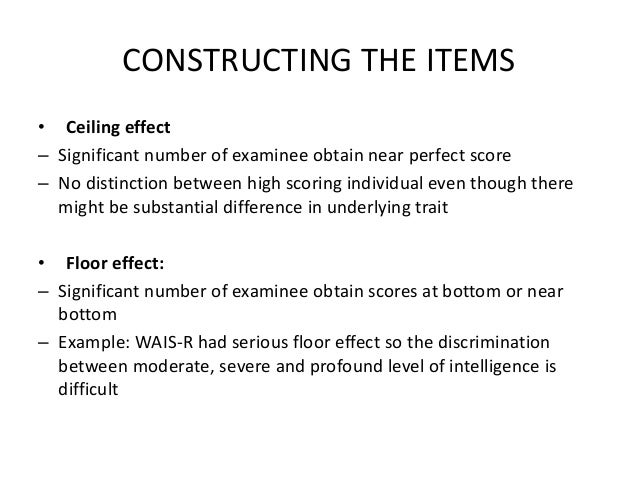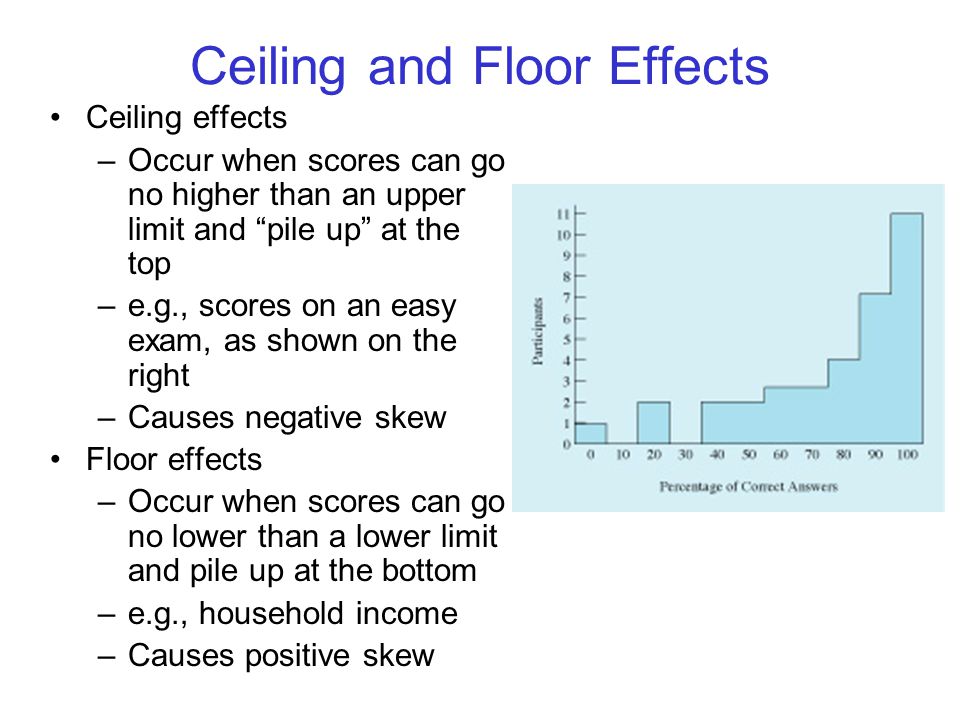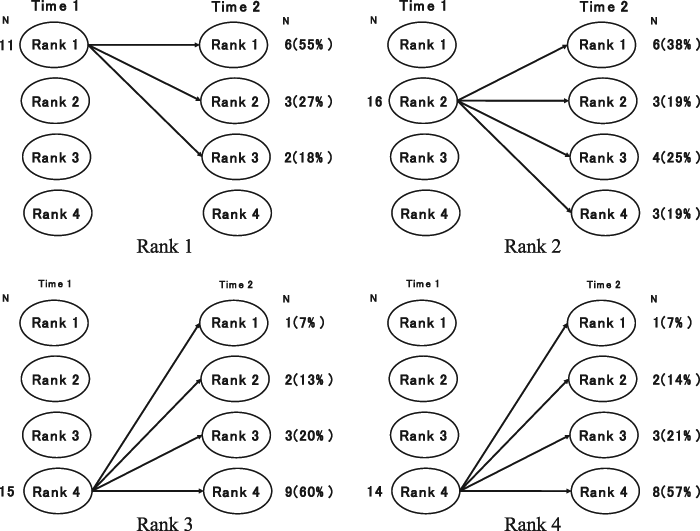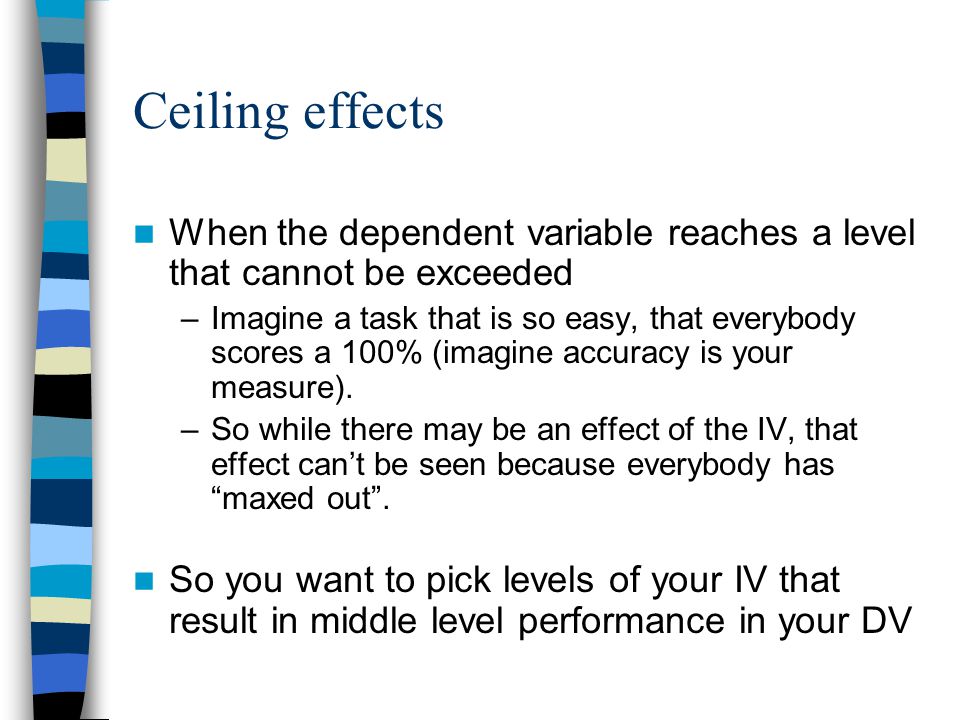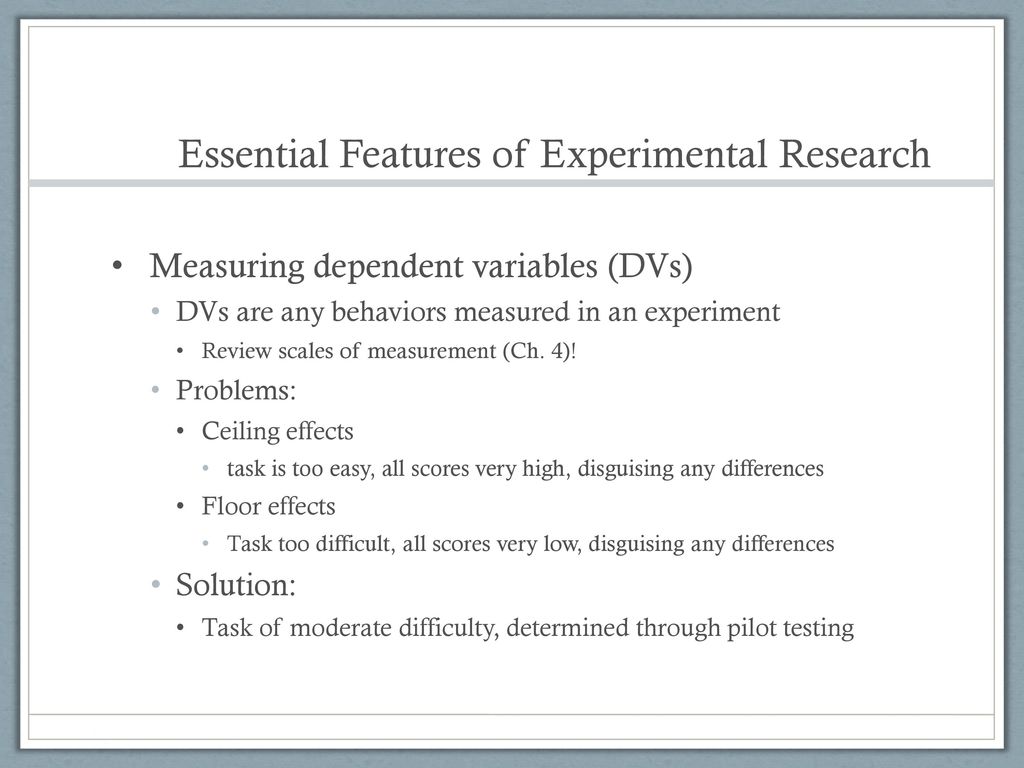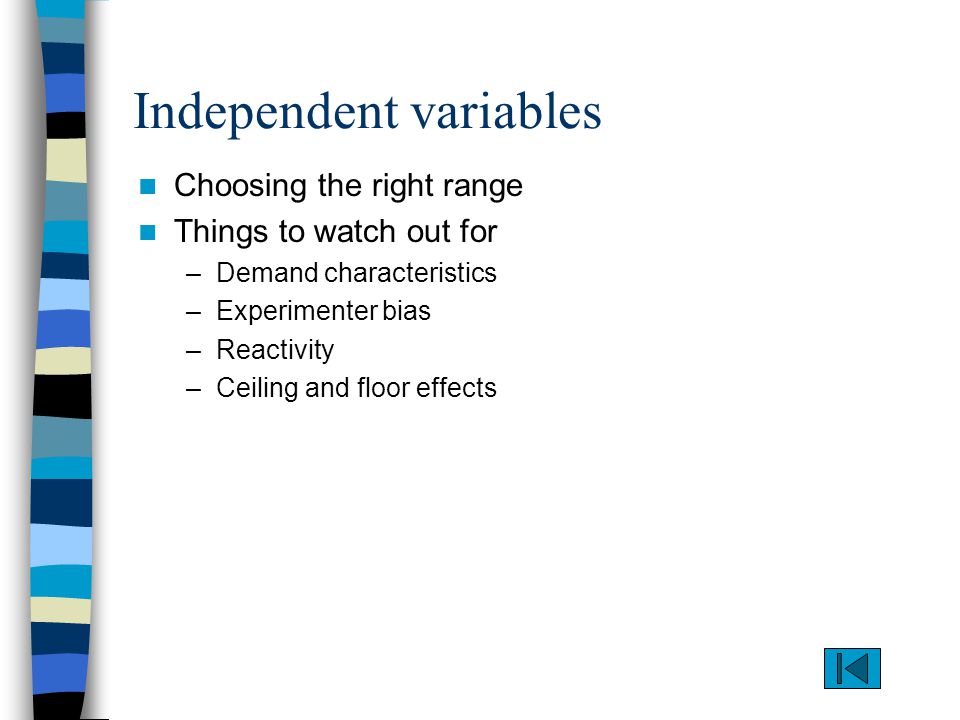Ceiling Effect Vs Floor Effect Psychology

In layperson terms your questions are too hard for the group you are testing.
Ceiling effect vs floor effect psychology. Psychology definition of floor effect. Common scales used in visitor studies and evaluation often suffer from ceiling effects. The inability of a test to measure or discriminate below a certain point usually because its items are too difficult. Ceiling effect in pharmacology.
Learn what a ceiling effect is and how to eliminate it using the overall experience rating developed and. This could be hiding a possible effect of the independent variable the variable being manipulated. Ceiling effect is used to describe a situation that occurs in both pharmacological and statistical research. A ceiling effect happens when most of your data is clustered toward the top of your scale.
The term ceiling effect has two distinct meanings referring to the level at which an independent variable no longer has an effect on a dependent variable or to the level above which variance in an independent variable is no longer measured or estimated an example of the first meaning a ceiling effect in treatment is pain relief by some kinds of analgesic drugs which have no further effect. This lower limit is known as the floor. In research a floor effect aka basement effect is when measurements of the dependent variable the variable exposed to the independent variable and then measured result in very low scores on the measurement scale. Let s talk about floor and ceiling effects for a minute.
For example the distribution of scores on an ability test will be skewed by a floor effect if the test is much too difficult for many of the respondents and many of them obtain zero scores. An example of use in the first area a ceiling effect in treatment is pain relief by some kinds of analgesic drugs which have no further effect on pain above a particular dosage level see also. It essentially describes when the dependent variable has leveled. A floor effect is when most of your subjects score near the bottom.
This is even more of a problem with multiple choice tests. In statistics and measurement theory an artificial lower limit on the value that a variable can attain causing the distribution of scores to be skewed. There is very little variance because the floor of your test is too high. An example of use in the second area a ceiling effect in data gathering is a survey that groups all respondents.


